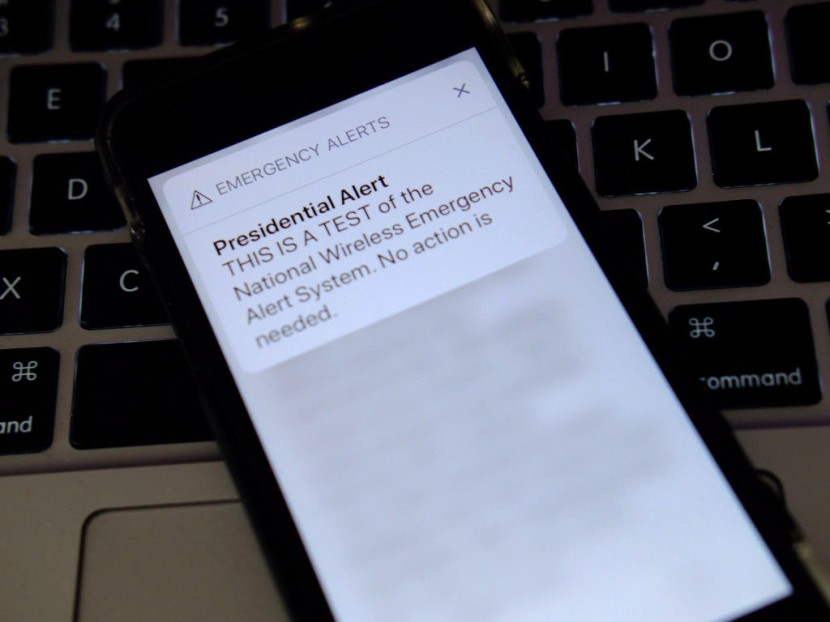
The Federal Emergency Management Agency (FEMA) and the Federal Communication Commission (FCC) issued an advisory that they would conduct a nationwide emergency alert test on Wednesday (October 4) at 14:20 Eastern Time (18:20 UTC).
Federal authorities urge the public to not panic once they receive a test Wireless Emergency Alert (WEA) message on their phones or their TV and radio programs get interrupted by an Emergency Alert System (EAS) test.
"The purpose of the Oct. 4 test is to ensure that the systems continue to be effective means of warning the public about emergencies, particularly those on the national level," the agencies said in a joint statement.
Rundown of the EAS/WEA Test
During the test, all wireless phones should receive an alert and an accompanying text message that should read: "THIS IS A TEST of the National Wireless Emergency Alert System. No action is needed."
Phones that are set to Spanish should display: "ESTA ES UNA PRUEBA del Sistema Nacional de Alerta de Emergencia. No se necesita acción."
The text would be accompanied by a unique tone and vibration that is meant to make the alert accessible to the entire public, including persons with disabilities, FEMA said.
At the same time, all radios and televisions would also broadcast a test emergency alert for approximately one minute.
The broadcast message will state the following: "This is a nationwide test of the Emergency Alert System, issued by the Federal Emergency Management Agency, covering the United States from 14:20 to 14:50 hours ET. This is only a test. No action is required by the public."
Testing for Any Emergency
Wednesday's test is set to be the 17th-ever nationwide test of the EAS. While it is the third test of the WEA, it is only the second time to be sent to consumer cellular devices.
The EAS has been tested at least once every three years since 2011, while the WEA has been tested alongside it since 2021, creating the Integrated Public Alert & Warning System (IPAWS).
Histories of False Alarm
However, as much as FEMA is continually developing its emergency alert technology, there have been multiple high-profile mistakes associated with mobile emergency alerts sent to devices.
One of the most infamous incidents was in 2018 when people in Hawaii received a ballistic missile attack warning, which turned out to be an error when a state emergency management worker accidentally pushed the wrong button in the emergency operation center which sent a false warning alerting of an incoming missile threat. State officials said the employee involved in the incident has since been fired.
Earlier this year, Florida emergency management officials issued an apology after residents were awoken at 04:45 ET (08:45 UTC) by a test emergency alert sent to their phones. Officials said the test alert was only meant to run on TV. The state later said it was ending its contract with the software company blamed for shooting off the pre-dawn test alert to cell phones.
FEMA told CNN last year that there have been vulnerabilities found in the software that TV and radio networks around the country use to transmit emergency alerts that could potentially allow a hacker to broadcast fake messages over the EAS.
As a result, FEMA's upcoming test recently sparked a wave of conspiracy theories online, which were not based on reality and misrepresented how the technology works.
© 2025 HNGN, All rights reserved. Do not reproduce without permission.








